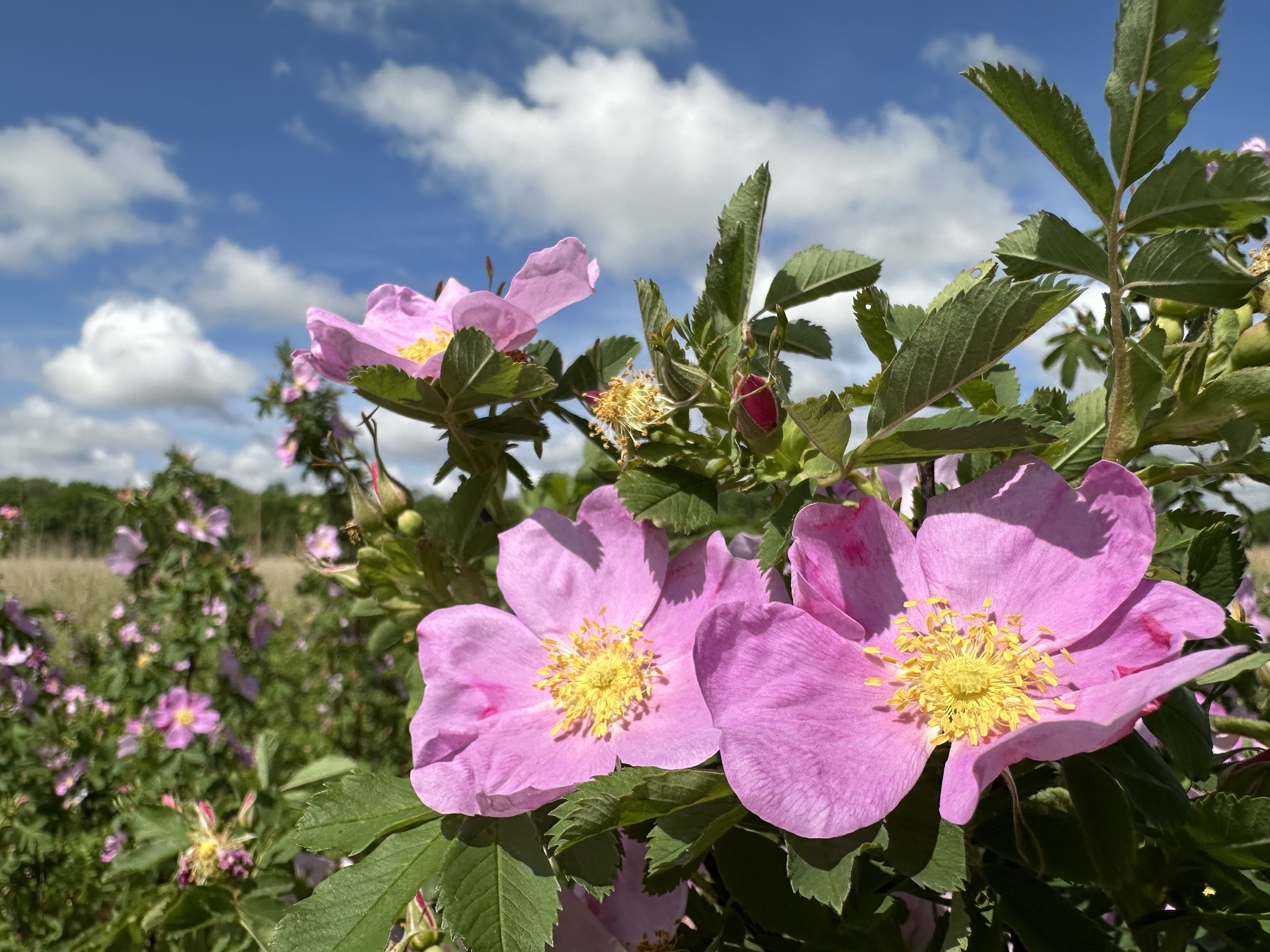Jeff Ewoldt grew up in northwest Iowa, currently practices law in Des Moines, and has always had a keen interest in nature and conservation.
On the first day of June, I headed out on my trusty mountain bike for a ride around Spencer, Iowa, intending to get some exercise and investigate wildflower activity in the northwest Iowa town where I grew up.
My primary destination was Oneota Park, located on the southeastern edge of town, not far from Spencer High School and my old neighborhood. Named for a prehistoric Native American culture that existed in the Upper Midwest from about 900 to 1700 A.D., Oneota consists of more than 220 acres of prairie and river bottom woods through which the Little Sioux River runs. It’s a place I’ve enjoyed exploring since it first became a county park in the late 1970s or early ‘80s, and the spring flowers on the expansive prairieland are particularly interesting to me.
On the way there, I made a brief stop at Pete’s Pond, once an unsightly landfill that fortunately was transformed into a lovely park some years ago. First to catch my eye were the reptilian residents of the pond—several painted turtles jockeying for sunning spots on a small log.
Not incidentally, the sunshine that day was heavily diluted by the haze of smoke from Canadian wildfires, making photography of flora and fauna a bit of a challenge. Nevertheless, I did my best to shoot the wispy strands of a large wild asparagus plant on the edge of the pond, covered with diminutive yellow, bell-shaped flowers.


Wide view of wild asparagus:

Then it was on to Oneota, mainly to see if a large patch of wild roses I first observed last year were blooming. Other than the smoky sky that made for slightly toned-down images, I wasn’t disappointed by the rose show. The bright pink petals and vivid yellow stamens and pistils looked to be in their prime.



Wild roses observed in late May 2024 in the same general area at Oneota:

As I continued my trek through the park along the mowed-grass trails, I saw many more examples of our state flower, widely varying in color from a brilliant magenta hue to very light pink (nearly white), and multiple shades in between. As I’ve learned from other members of the Iowa wildflower enthusiasts Facebook group, wild roses are particularly prone to hybridization, making identification of each particular variety sometimes difficult (especially for a novice like me).
More wild roses:




Open prairie at Oneota Park:

By this point I’d gotten my fill of roses, so I continued riding past the woodsy backwater where I sometimes catch a glimpse of wood ducks, and then toward the wide-open marshy area on the far side of the park. Along the way I spotted several examples of Hoary alyssum in bloom poking through some rather gravelly soil. (Hoary alyssum is a non-native plant that can become weedy or invasive, and “is most prolific on open sites that are dry or disturbed.”)

I then doubled-back through Oneota, exited the park, and got on the bike trail that parallels the Little Sioux River through town. Continuing west, the trail enters woodland, crosses the confluence of the Little Sioux and Ocheyedan Rivers, and soon leads to more wide-open grassland.
There, the margins of the trail had been mowed, but that hadn’t prevented numerous spiderwort plants from sending up some ground-hugging blossoms (in Spencer High School’s colors, no less). I was pleased to see several Bobolinks active in this area, and I took a moment to listen for the males’ metallic, bubbly, rambling song.
Spiderwort flower:

Continuing west, the bike trail terminates at a gravel road near a Spencer landmark known as Thunder Bridge, so named because of the raucous sound the deck timbers produce when someone drives across them.
At this spot along the Little Sioux, I noticed a bright yellow collection of plants that appeared to be members of the genus Brassica, which includes plants in the cabbage and mustard family. Nearby were several Indian hemp plants with their small white flower clusters beginning to bloom.
Mustard plants blooming:


Indian hemp (also known as dogbane):

Additionally, I saw what I believe was a lone Flixweed plant—something I’d never seen before—as well as some Wild Four-o’clocks.
Flixweed:

Wild Four-o’clocks:

Finally, upon arrival back at my parents’ house, I noticed some Eastern waterleaf (also known as Virginia waterleaf) showing its pale lavender colors in a wild spot in the backyard. With that, my spring wildflower tour around Spencer was concluded.



1 Comment
Thank you, Jeff Ewoldt, for taking readers on your Spencer bike ride.
My wild roses suffered damage this month in the worst farm chem drift event on my land since 1988. So it was especially heart-lifting to see several photos of the lovely roses you saw and to be reminded that there are places in Iowa where beautiful wild roses are flourishing. Thanks again.
PrairieFan Mon 30 Jun 4:28 PM